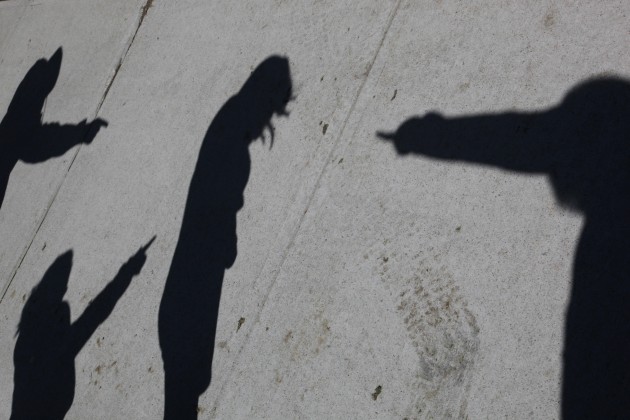Student brings awareness to the epidemic of bullying

Twelve-year-old Roy VanDusen stood outside the middle school showers terrified. He’d refused to set foot near them until his teacher finally told him enough was enough; he was showering with the rest of his class.
He wasn’t afraid the showers, he was afraid of the people using them: the same people who, once VanDusen finally did end up using the showers, tormented him by giving him the nickname “the uni-baller” until he left town.
“I was born with one testicle. I knew how harsh people could be, and that’s why I didn’t want to do it. Because someone saw that and they never let me live it down. It was really demeaning at the time. And I don’t really even think I’ve recovered from that now,” said the now 24-year-old freshman.
According to the National Center for Education, in 2009, 28 percent of students between the ages of 12 and 18 admitted to being bullied in school.
VanDusen wants that number to decrease.
He recently started a Be a STAR Alliance club on campus in hopes of bringing light to the problem of bullying in schools and helping alleviate it. The Be a STAR Alliance was co-founded by the Creative Coalition and the WWE.
“Bullying is definitely revolutionizing into this like, real-life crazy monster. Our message is to just know that it’s just not right. It should be taken completely out of the school zone,” said WWE star Alicia Fox in a radio interview with VanDusen.
“A big dent could be made in bullying if people were aware,” VanDusen said.
Senior Psychology major Abby Nachman recently completed a project in Poultney Elementary School that dealt with the problem of bullying.
“We gave the students the Olweus bullying survey, and the weird thing is that many of them said they’d been bullied, but no one admitted to being a bully,” Nachman said. “The most common reasons for being bullied were race and their socio-economic status.”
According to the American Society for the Prevention of Cruelty to Children, each day an estimated 160,000 students in the USA refuse to go to school because they dread the physical and verbal aggression of their peers. In addition, six out of 10 American youth witness bullying at least once a day, the ASPCC reports.
“It’s a real problem and it’s growing every day,” Fox said.
A WCAX video posted online Thursday shows Missisquoi Valley Union High School student Hazen Martel beating up sophomore Robbie Duelle after baiting him to fight. Martel starts by calling him names to get his attention and then says “hit me, come on, do it,” to which Duelle responded “I don’t start fights.”
Martel then began punching Duelle relentlessly. The other students encouraged the attack for two minutes – and the bus driver didn’t stop it. In the video, Duelle recalls the other students saying “hit him, hit him. Get him in the face.” Martel was given juvenile citation for simple assault.
“I want to see the bullying stopped. I want him to be able to go to school and be happy. No kid should have to go through this,” Michelle Duelle, Robbie’s mother said in the video.
Castleton State Psychology Professor Trevor Tebbs thinks that bullying in schools is an epidemic.
“It’s all over the place, and it causes anxiety. Kids can withdraw because they’re afraid. They withdraw into themselves, into their homes, into their rooms. They see themselves at fault. ‘Is there something wrong with me? Do I act funny? Do I speak funny?’ It has a huge effect on their self-concept and the way they’re able to present themselves,” Tebbs said.
“I think if you surveyed everyone on campus and everyone was honest, I think everyone would admit to being bullied at some point in their life,” VanDusen said.
In a poll, 17 out of 25 students asked did admit to being bullied.
“I was extremely bullied in elementary and middle school. I was called cat woman and people would meow at me. Students would call me a copycat because I would have the same clothing. People avoided me and never sat with me at lunch,” said freshman Alexa Platts.
VanDusen has high hopes for the Be a STAR Alliance Club and hopes that it will bring awareness to not just the college community, but the surrounding areas as well.
“We could bring it to the area schools and bring awareness to the college community. Then it spreads like a good disease. You get one college and then you get six colleges that start seeing this and start seeing it come up and more people know about it,” VanDusen said.







